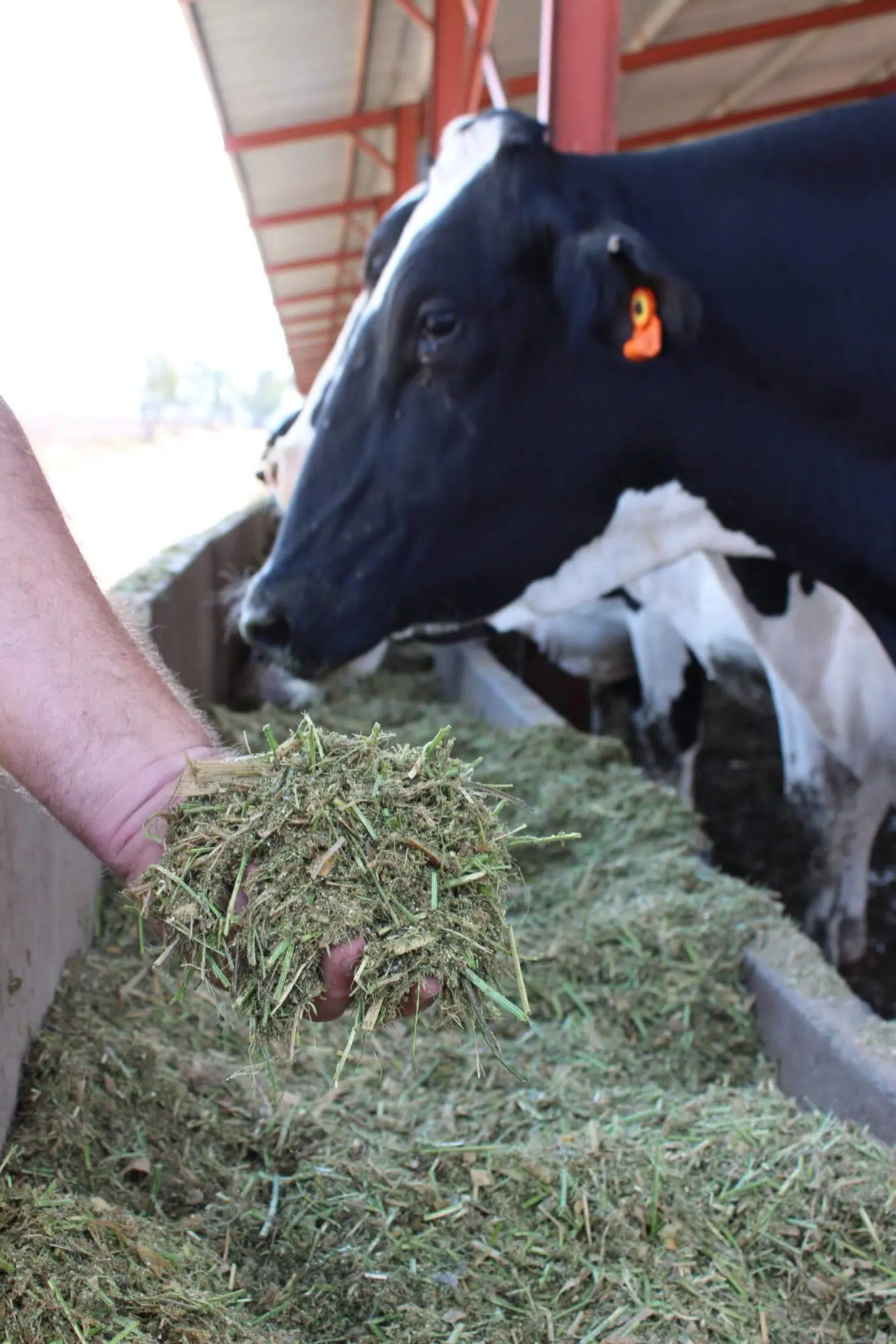How do you fight an enemy of which you are unaware? By ensuring you are prepared for the attack when it comes and being able to recognise the warning signs ahead of it. When we’re talking about silage, the unseen enemy we are fighting is mycotoxins.
Before you roll your eyes, give me chance to explain why they should still be on our radar – now more than ever. I’m sure that when you hear the word mycotoxin, your mind instantly jumps to silage, does a mental check of when last you saw mould, and then dismisses the thought of mycotoxin issues. Now recall that this specific threat doesn’t necessarily show its face …
Mycotoxins are there all the time. Levels and strains may vary, but there will always be a background level of mycotoxins influencing your cows. Cows, in turn, have the ability to deal with a low level of mycotoxin presence as they adapt to it over time; however, we don’t know what that level is, and it could differ between herds and farming systems. Combined with ever-changing climates and rainfall patterns that also affect and often increase the prevalence of mycotoxins in raw materials and pastures, this creates a level of uncertainty around the actual risk of mycotoxins. This uncertainty opens up our cows to possibly dealing with subclinical mycotoxicosis, which could slowly be wreaking havoc on immunity, production, and reproduction, creating small but incremental losses.
I am sure we all know that it is the problem that you are not aware of that can potentially cost you the most. Cows not producing quite as they should, elevated somatic cell counts (SCC), and other sub-par performance measures point to something that is wrong but just don’t shout loud enough to let you know what the problem is. How do we go about identifying whether mycotoxins are a problem our cows are dealing with and what can we do to ensure we are acting preemptively to avoid mycotoxin issues?
Keep your eyes open
First, know the conditions that are conducive to mould growth that increase the prevalence of mycotoxins in raw materials, forage, and pastures. These conditions include:
- Hot and humid or wet conditions. These environmental conditions will be especially applicable to moulds found in fields and pastures. Any environmental condition that puts stress on pastures creates the opportunity for mould growth and increases mycotoxin prevalence.
- Raw materials and by-products. Raw materials can easily be contaminated with soil and dust. Maize and maize products such as silage are feed materials that form the perfect growth medium for moulds due to having sufficient carbohydrates and energy to grow, which is often compounded by poor silage and bunk management.
- Poor raw material or feed quality increases the risks of mould growth and mycotoxin contamination.
Indicators that your herd could be struggling with mycotoxicosis:
- Persistent slow decline in milk production, often seen with a steady increase in SCC, but no clear cause is evident.
- Increase in bulk tank SCC coinciding with the start of feeding high-risk feeds. Raw materials and silage can be tested; however, mycotoxin testing is often not sensitive enough to pick up trace amounts in feed. Although this means that low levels of mycotoxins could be present and you’re likely thinking that the cow can surely deal with this on her own, even low levels could be contributing to chronic inflammation and immune activation. This, combined with an inconsistent spread of mycotoxins in a silage pile, sample numbers, and method of sampling can enable the collection of a mycotoxin-free sample while still not guaranteeing that the whole bunker is mycotoxin-free.
A plan of action for fighting mycotoxins
If you are increasing the use of high-risk feed such as silage, typically seen at this time of year, you can assume that there is a higher risk of your cows struggling with mycotoxicosis. Strategically include a mycotoxin eliminator into your ration to ensure that any mycotoxins that are present don’t wreak havoc. There are a lot of well-researched products available on the market; however, it is up to you to ensure you really dig deep into the value you get from each one. Cheaper is not always better. Some mycotoxin eliminators do more than just bind mycotoxins, such as having immunomodulatory effects and protecting hepatocytes. It is well worth your time to investigate which product you use, as this will directly affect your return on investment.
Not a fan of mycotoxin eliminators and think cows don’t need it? The rumen has, to a certain extent, the ability to detoxify some – but not all – mycotoxins found in feed, pastures, and raw materials. Levels of raw materials and feed consumed by dairy cows also increases the mycotoxin load in the cow, increasing resources needed to detoxify these additional mycotoxins. This process uses resources that could have otherwise been used for production and reproduction. Are we doing the best for our cows’ health by not supporting them when we suspect they need it?
An often-overlooked role is that of feed and raw material storage. When last did you empty out and really clean your silos? Dairy meal and pellets delivered while still hot could have moulded in the silos over time without your knowledge. It is good practice to ensure that you deep-clean silos and feed storage areas a few times a year.
Now that you know what can increase your mycotoxin risk, how you can determine whether it is a risk factor in your herd, and how to go about managing it, one last question remains: “What will your mycotoxin risk management strategy be going forward?” Ask your herd veterinarian and qualified nutritionist for help getting your action plan off the ground.
Technical adviser: Ruminants










